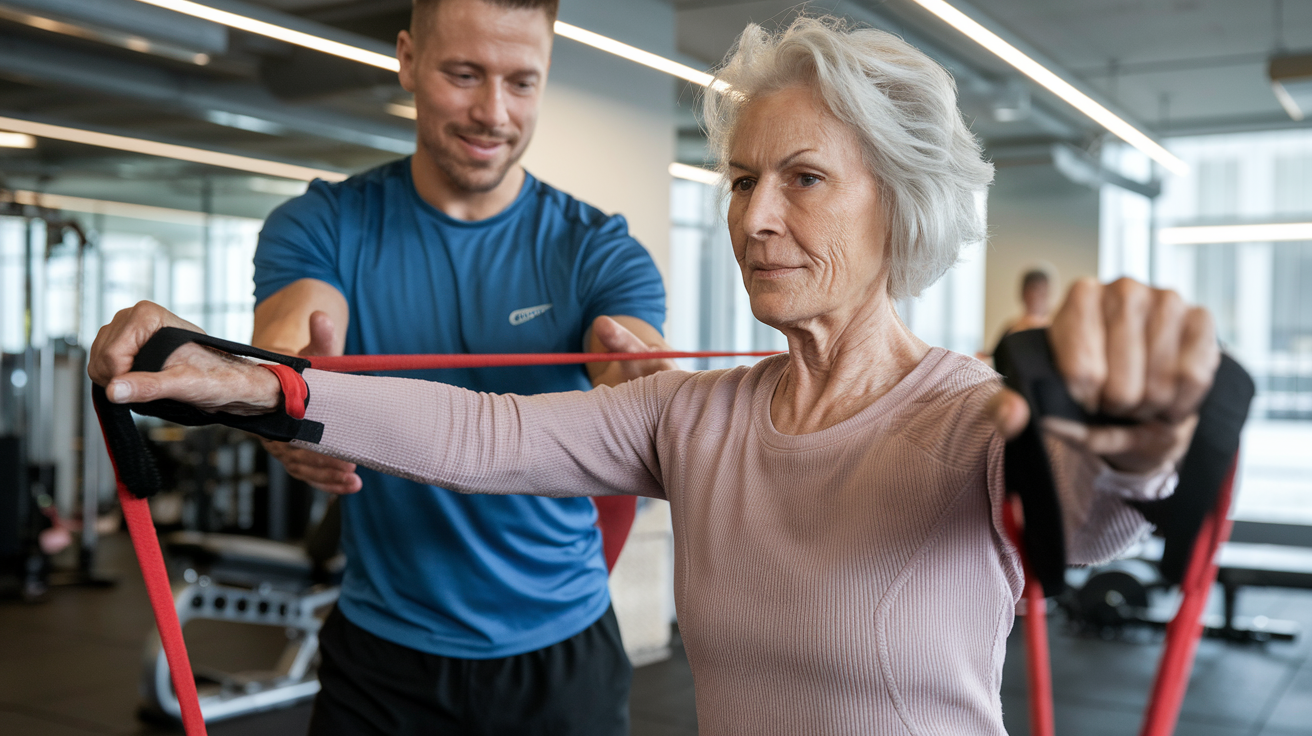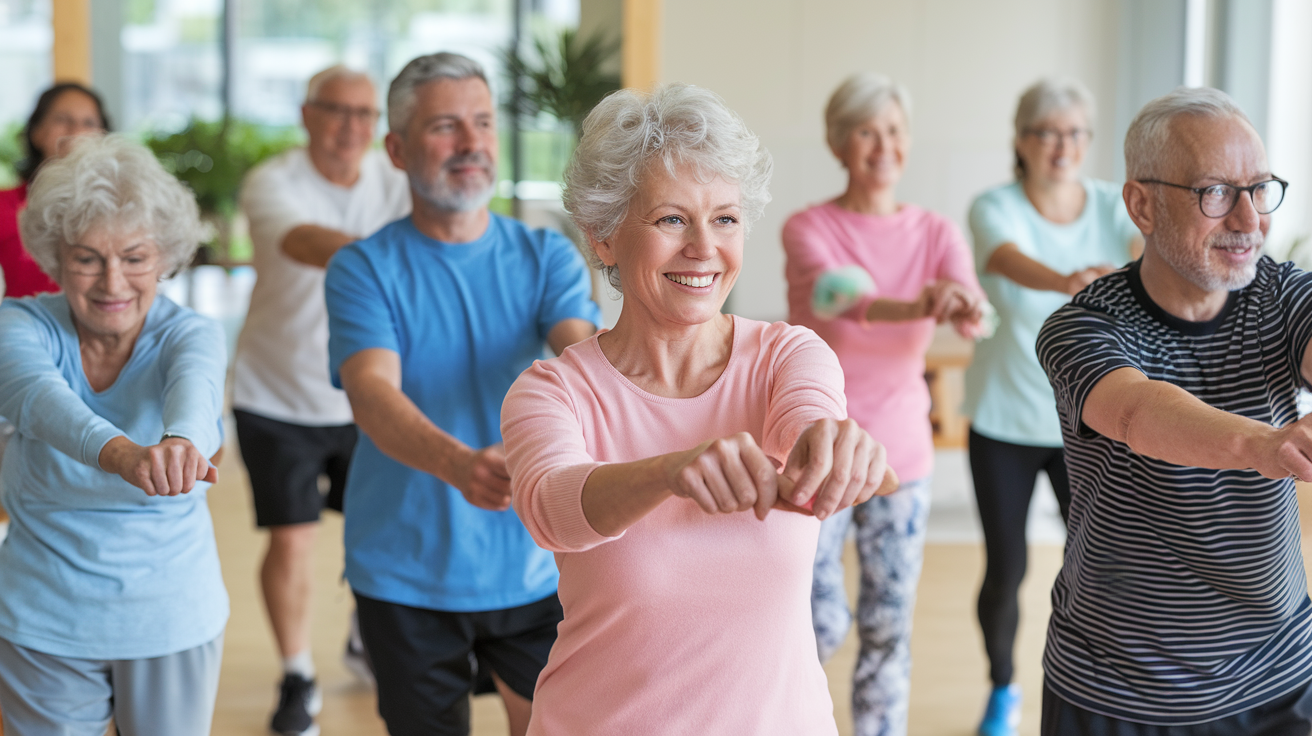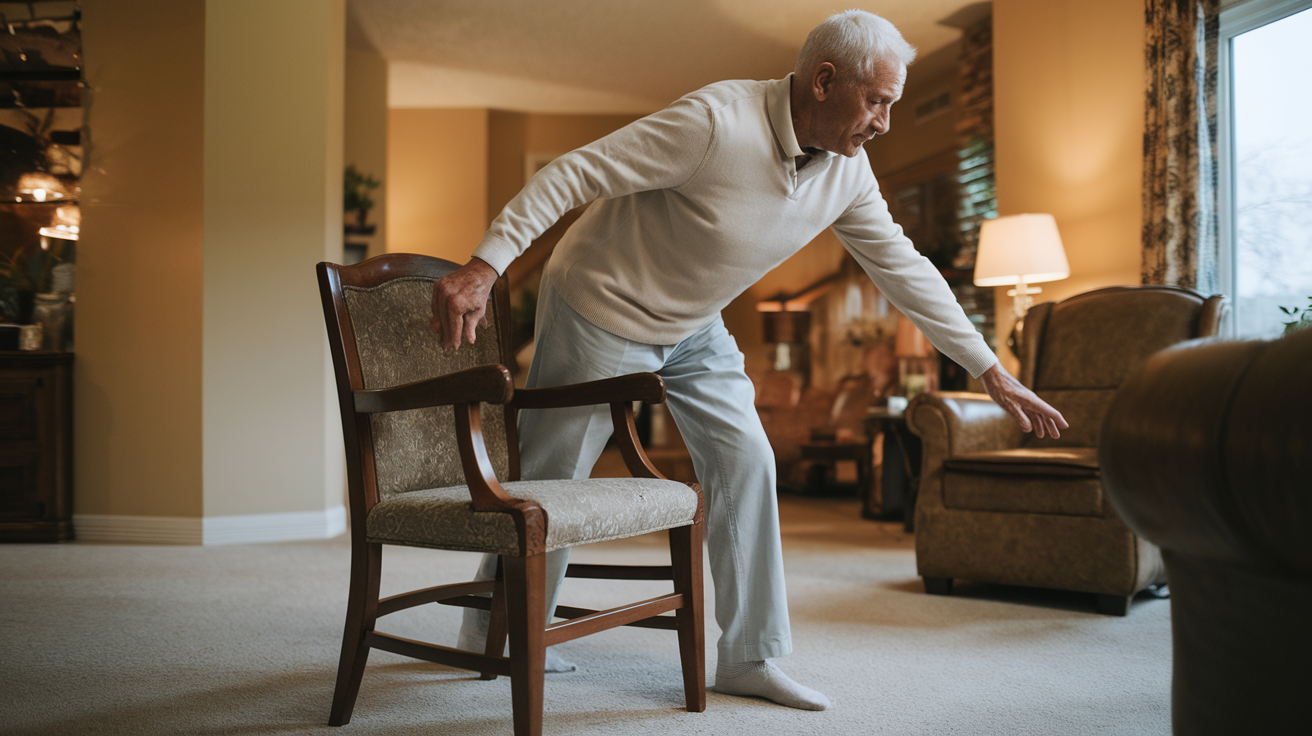
Discover the Benefits of Physical Activity for Adults over 65.
Mar 18, 2025Ageing is inevitable, but losing strength, mobility, and independence doesn’t have to be. Regular physical activity, especially strength training and balance exercises, can help older adults maintain their independence, reduce the risk of falls, and improve overall well-being. Strength training not only helps preserve lean muscle but also reduces body fat percentage and mass, which is crucial for overall health and longevity. Whether you want to keep up with grandchildren, prevent osteoporosis, or simply stay active, incorporating exercise into your daily routine is one of the best decisions you can make for your health.
The Link Between Muscle Strength and Longevity

As we age, we naturally lose muscle mass—a condition called sarcopenia. Without strength training, body fat percentage tends to increase as lean muscle diminishes with age. However, strength training and resistance exercises can slow or even reverse this process, improving strength, coordination, and endurance. Studies show that seniors who engage in regular physical activity live longer, healthier lives with a greater quality of life.
How Resistance Training Improves Bone Density
Osteoporosis is a common concern among older adults, particularly postmenopausal women. Weight-bearing exercises, such as strength training and walking, can help maintain and even increase bone density, reducing the risk of fractures and improving overall bone health.
Types of Exercise for Older Adults
As we age, it’s essential to incorporate various types of exercises into our routine to maintain overall health and fitness. Here are some exercises that are beneficial for older adults:
Aerobic Exercises for Cardiovascular Health

Aerobic exercises are an excellent way to improve cardiovascular health, increase endurance, and boost mood. Some examples of aerobic exercises suitable for older adults include:
-
Brisk Walking – A simple yet effective way to get your heart rate up. Walking can be done on a treadmill or around the neighborhood.
-
Swimming – A low-impact exercise that’s easy on the joints while providing a full-body workout.
-
Cycling – Whether on a stationary bike or a regular bicycle, cycling is great for cardiovascular health.
-
Dancing – A fun way to stay active and improve coordination.
-
Gardening – Activities like raking leaves or planting flowers can also count as aerobic exercise.
These exercises can be modified to accommodate any physical limitations or health conditions. For example, swimming can be done in a pool or using a water aerobics class, making it accessible for those with joint issues.
Flexibility and Stretching for Mobility
Flexibility and stretching exercises are crucial for maintaining mobility and preventing injuries. These exercises can help improve range of motion, reduce stiffness, and enhance overall flexibility. Some examples of flexibility and stretching exercises suitable for older adults include:
-
Yoga – Promotes flexibility, balance, and relaxation.
-
Pilates – Focuses on core strength and flexibility.
-
Tai Chi – Enhances balance and flexibility through slow, controlled movements.
-
Stretching Exercises – Targeting the hamstrings, quadriceps, and hip flexors can improve lower body flexibility.
-
Seated or Standing Stretches – For the back, shoulders, and chest to maintain upper body mobility.
These exercises can be done at home, in a group class, or with a personal trainer. It’s essential to listen to your body and modify or stop if you experience any discomfort or pain.
Exercise Guidelines for Older Adults
As we age, it’s essential to follow exercise guidelines that cater to our unique needs and abilities. Here are some guidelines to keep in mind:
Recommended Frequency and Duration
-
Aerobic Exercise: Aim for at least 150 minutes of moderate-intensity aerobic exercise per week, spread out over 3-5 days. Activities like brisk walking, swimming, and cycling are excellent choices.
-
Strength Training Exercises: Incorporate strength training exercises at least 2-3 times per week, targeting all major muscle groups. Using light dumbbells, resistance bands, or body weight exercises can help build and maintain muscle.
-
Flexibility and Stretching: Include flexibility and stretching exercises 2-3 times per week, focusing on major muscle groups. Practices like yoga, Pilates, and Tai Chi can enhance mobility and prevent stiffness.
-
Start Slowly: Begin with light exercises and gradually increase frequency, duration, and intensity as your body adapts.
Remember to consult with your healthcare provider before starting any new exercise program, especially if you have any underlying health conditions or concerns. It’s also essential to listen to your body and rest when needed, as overexertion can lead to injury or burnout.
By incorporating these exercises and guidelines into your routine, you can maintain a healthy and active lifestyle as you age.
Strength Training for Seniors: The Key to Healthy Aging
Strength training isn’t just for bodybuilders—it’s a vital component of staying active and independent in later life. Building muscle is a fundamental goal of strength training, emphasizing the importance of regular, targeted workouts, proper nutrition, and recovery. Whether using light dumbbells, resistance bands, or body weight exercises, strength training can enhance mobility, prevent falls, and boost confidence.
Can Older Adults Build Muscle Growth? Science Says Yes!
Contrary to popular belief, people over 65 can still build and maintain muscle. Research shows that strength training just two to three times per week, combined with proper nutrition, can help older adults gain muscle, leading to significant improvements in muscle strength, balance, and overall function.
The Best Strength Training Exercises for Seniors

For beginners, starting with simple movements and gradually increasing intensity is key. Free weights, such as dumbbells and barbells, are highly effective for muscle building as they engage multiple muscles for stabilization, offering a more challenging workout experience that can accelerate strength gains and stability. Some excellent exercises for seniors include:
-
Chair Squats – Strengthen the legs and improve balance.
-
Wall Push-Ups – Build upper body strength without strain.
-
Seated Leg Lifts – Improve hip mobility and core stability.
-
Resistance Band Rows – Enhance posture and back strength.
A Structured Approach: The Everfit Program
For those looking for a safe, effective, and structured exercise plan, Everfit offers a tailored program designed specifically for older adults. A resistance training program is crucial for counteracting muscle and bone mass loss, which is particularly important as individuals age. The Everfit approach focuses on physical, nutritional, and cognitive health, helping seniors build strength, maintain balance, and stay independent. Each Everfit session is designed to be accessible and adaptable, ensuring that every participant gets the right level of support to meet their needs.
How Exercise Helps Prevent Falls and Osteoporosis

Falls are one of the leading causes of injuries in older adults, often leading to a decline in independence. Increasing lean muscle mass is crucial for overall health and fitness, as it helps improve physical appearance, metabolic health, and physical capabilities. Fortunately, regular physical activity, particularly balance and coordination exercises, can significantly reduce the risk of falls.
Simple Balance Exercises to Reduce Fall Risk
-
Heel-to-Toe Walk – Strengthens balance and coordination.
-
Single Leg Stands – Improves stability and lower body strength.
-
Tai Chi or Yoga – Enhances flexibility and control over movements.
Everfit incorporates these balance-building exercises into its structured programs, ensuring that participants gradually improve their stability and confidence in daily movements.
How to Start a Safe and Effective Exercise Plan
Starting an exercise program can feel overwhelming, but taking small, manageable steps makes it easier and safer. Proper nutrition and training strategies are crucial for achieving muscle growth, as they ensure your body has the necessary resources and stimulus to build muscle effectively.
Tips for Staying Motivated and Avoiding Injuries
-
Start Slow – Begin with light exercises and gradually increase intensity. Power training, which involves integrated or compound movements, is crucial for enhancing gross motor coordination and reinforcing proprioceptive stabilizing mechanisms.
-
Stay Consistent – Aim for at least 150 minutes of moderate exercise per week.
-
Listen to Your Body – Avoid pushing through pain or discomfort.
-
Work with a Trainer or Physical Therapist – Get personalized guidance to ensure exercises are performed safely.
-
Follow a Structured Program – The Everfit program provides step-by-step guidance tailored for older adults, ensuring a safe and progressive approach to fitness.
Take Action: Improve Your Health Today!
Exercise is one of the most effective ways to maintain strength, prevent falls, and stay independent as you age. It is possible to build muscle while in a calorie deficit when trying to lose weight, highlighting the importance of proper nutrition and protein intake. Whether you start with short walks, resistance band exercises, or a structured strength training program like Everfit, taking the first step is what matters most.
Ready to Get Started?

-
Join the Everfit Program to receive expert-led training tailored to your needs.
-
Download our Free Guide to Strength Training for Seniors.
-
Try These 3 Easy Exercises Today to improve balance and coordination.
-
Join Our Senior Fitness Community for expert advice and motivation.
By staying active, you are investing in your health, mobility, and independence. Start your journey today with Everfit!
FAQ: Common Questions About Exercise for Seniors
Is weight training safe for seniors?
Yes! When done correctly, weight training is not only safe but also highly beneficial for seniors, improving muscle strength, bone density, and balance. It is important to allow adequate recovery time between training sessions that target the same muscle group to promote muscle repair and growth. Programs like Everfit are designed to ensure that exercises are safe, effective, and tailored to each individual’s abilities.
How can older adults build muscle after 65?
Through regular resistance training and a protein-rich diet, older adults can focus on gaining muscle, enhancing overall strength and function. The Everfit program includes both exercise and nutritional guidance to support muscle maintenance.
What are the best exercises for preventing falls?
Balance-focused exercises like Tai Chi, single-leg stands, and strength training targeting the legs and core can significantly reduce fall risk. Everfit’s structured training includes these exercises to improve stability and prevent injuries.
How often should seniors do strength training?
For best results, seniors should engage in strength training exercises two to three times per week while incorporating balance and flexibility exercises into their daily routines. Everfit provides a guided schedule to ensure a balanced and effective routine.
By incorporating physical activity into your lifestyle, you can enjoy greater strength, confidence, and independence well into your later years. Start today with Everfit and feel the benefits of structured movement!
Don't miss a beat!
New moves, motivation, and classes delivered to your inbox.
We hate SPAM. We will never sell your information, for any reason.

